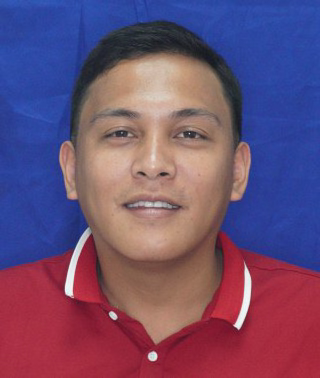
organizational structure

EMILIO R. CID
PUNONG BARANGAY

AL CYRIL POGAY
BARANGAY KAGAWAD

MARIA ELENA O. CARBAJAL
BARANGAY KAGAWAD

ROLA BUTCH A. OBEÑITA
BARANGAY KAGAWAD

ROLAND F. FERNANDEZ
BARANGAY KAGAWAD

NESTOR D. LABADO
BARANGAY KAGAWAD

JOSHUA CABUG
BARANGAY KAGAWAD

JERIC VON WAPEN
BARANGAY KAGAWAD

XYSTER DAVE MARAGUINOT
SANGGUNIANG KABATAAN (SK) CHAIRMAN
Barangay Profile
Barangay 11 is located about 1 kilometer in the western part of the city proper. Based on the Comprehensive Land Use Plan of the City, it has a total area of 975 hectares. With its rather unusual territorial shape, the Northern part of the Barangay is bounded by Barangay Kalasungay and Barangay 10, the South part by Barangay Casisang, and the West by part of Barangay Kalasungay and Barangay Imbayao, and on the East by Barangay 7.

Mission
To improve access of roads, to source out funds, organize plans, manage and mobilize for development, promote quality education minimize unemployment through livelihood, encourage self-reliant activities, to live harmoniously, healthily and peacefully.

Vision
Barangay Eleven envisioned to be a community of disciplined, law-abiding, productive and healthy individuals, most peaceful, clean and orderly Barangay in the City.
Historical Background
According to early settlers in the Barangay, there was once a “balete” tree that grew on a portion of land owned by Mr. Fructuso Dumalahay, which is about a kilometer from the Poblacion. The tree grew so big and tall that its shade was a favorite resting spot for inhabitants who are tilling nearby farmlands. Every time passers-by saw those resting under the shade, they would ask “Imba Tag-inu kaw?” or what are you doing there? The usual answer is “tagpalambong ah” which means just resting under the shade. The tree eventually became a landmark and the place where it grew was later called “Impalambong”, from the word “Tagpalambong”.
The early inhabitants were mostly farmers producing corn, rice, root crops, abaca, and vegetable for their consumption. In 1912, Spanish authorities appointed in succession the following prominent people to lead the community. They were Mr. Lingkab, Mr. Angkig, Mr. Mampalawod and Mr. Juan Dugilmo, the father of late ex-governor Lope Damasco. The four named leaders were responsible for laying down the territorial limits and political boundaries of the place. Until now, the name “Impalambong” has been retained. With the inflow of settlers coming from different provinces, the place slowly became a residential extension of the Poblacion. San Isidro College was also established in the area and so with other institutions. The inter-marriages between the Lumad and Christian settlers paved the way for the Christians to share and later assume responsibilities as community leaders.
In the early part of 1948, Mr. Feleciano Flores was designated by the Municipal Mayor to administer Impalambong. Later, he was replaced by Mr. Melecio Quirab, then designated by the succeeding Municipal Mayor to look after the welfare of the people of Impalambong.
The declaration of Martial Law in 1972and the passing of several Presidential Decrees (PD86, 86A, and 210) paved the way for the creation of Barangay in the Poblacion or urban centers of Municipalities and chartered cities where there are no existing barrios.
An administrative cluster of the community at the time was known as Purok. Mayors were given the authority to extend formal appointments of purok leaders into Barangay Chairman. With these, then Mayor Timoteo Ocaya converted the puroks in 20 Barangays in the Poblacion alone and appointed automatically the purok leaders as Barangay Chairman. This was done in the middle part of 1973.
Considering that Impalambong has a large area, it was converted into 3 barangay, Barangay 18, 19, and 20, with Mr. Mariano Paulican, Mr. Mamerto Decano and Sgt. Segundino Langamin as respective chairman Mr. Mariano Paulican was later replaced by Dr. Florencio Cui.
After a year, Mayor Ocaya observed that the 20 Chairman become unruly and a number of them signified intentions to resign. In addition, legal provisions state that each Barangay should have at least One Thousand (1,000) in population. With this, the number of barangays was reduced from 20 to 11. As a result, political or administrative boundaries were also altered.
The Barangay Impalambong were then reduced to two (2). Barangay 18 was renamed Barangay 10 while Barangay 19 and 20 were fused into one (1) and named as Barangay 11.
As for Barangay 11. Mr. Sergio Mantiza Jr. was appointed Barangay Chairman in 1975. He serves until 1982 when he opted not to run in the Barangay election. Mrs. Teofista Talibong on the said election and became the first elected Barangay Chairman. She was succeeded by Mr. Esteban B. Jumawid who serves until 2007. Then succeeded by Romeo Y. Tagayuna won the Barangay election in October 2007. The late Punong Barangay, Ruben Z. Ravanera (Ret.) PA was the 13th Punong Barangay from the row who was elected last October 25, 2010. During the Election held last October 28, 2013, Emilio R. Cid was elected as the new and current Punong Barangay of Barangay 11.
Contact Information
Landline:
088-813-5651
Email:
mcbarangayeleven@gmail.com
